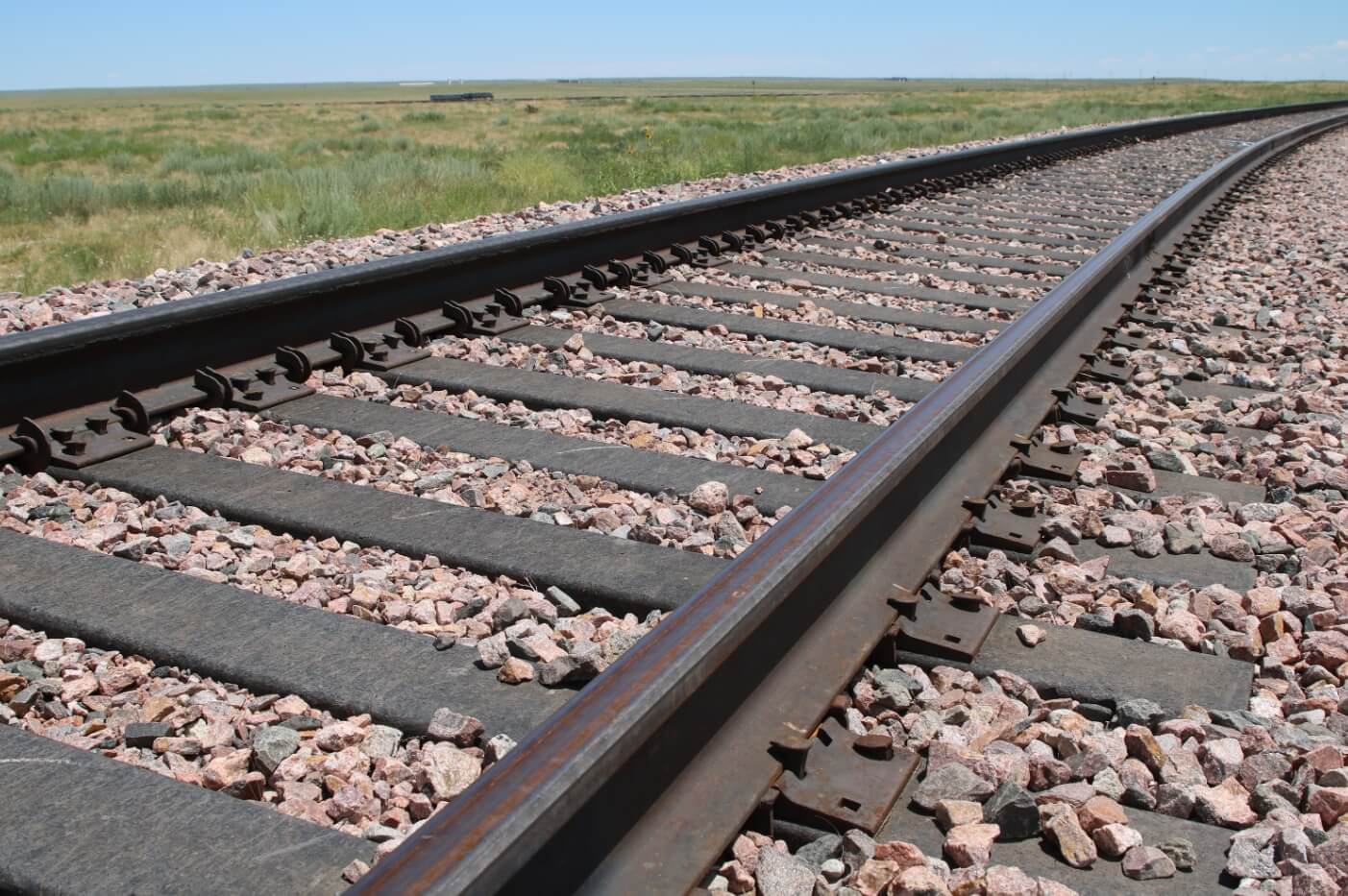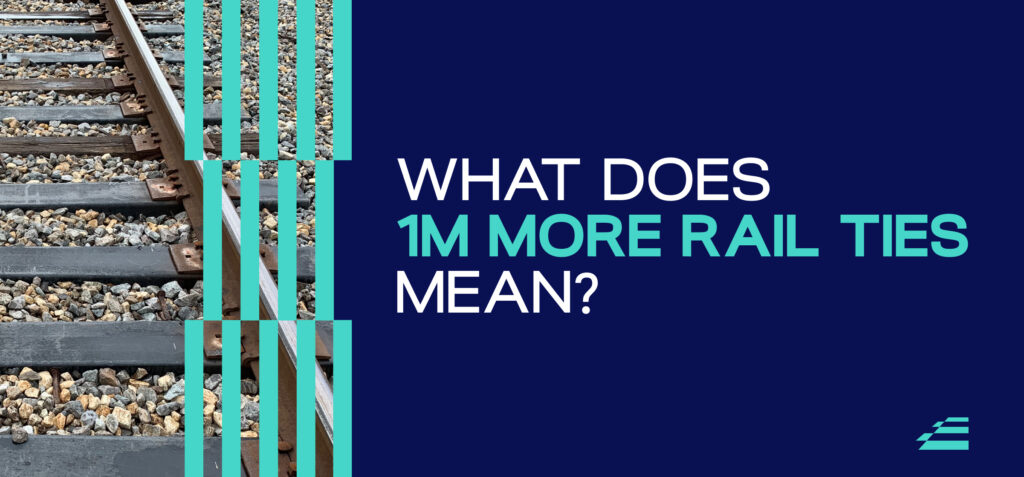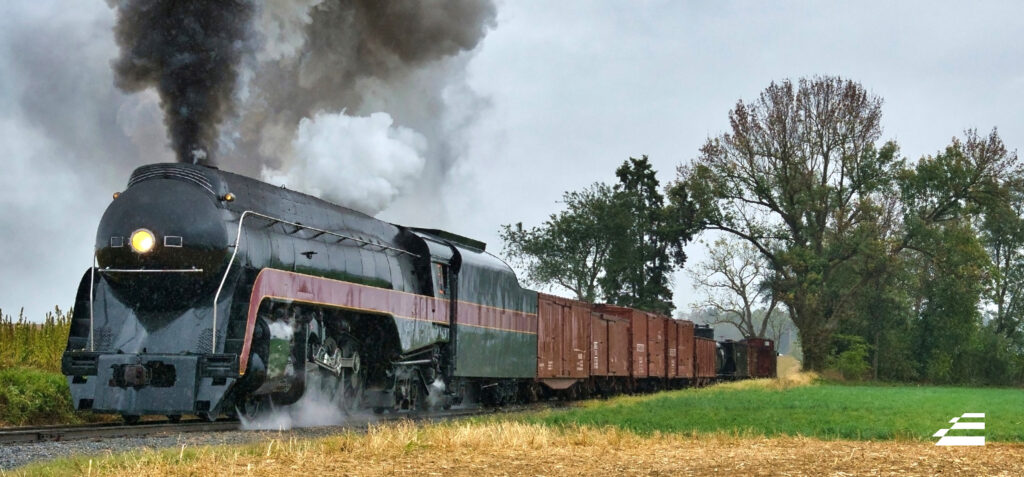Chances are, a product you own was delivered to a location near you by a freight train. You may not think about how materials are moved around the country, but there are more than 600 freight railroads operating in the United States on an approximately 140,000-mile track system.
The railroad was developed in Great Britain by a man named George Stephenson, and the first one chartered in the U.S. was the Baltimore and Ohio Railroad in 1827. For many years, the material employed for railroad ties – also referred to as crossties or railway sleepers – was wood. However, in recent years, the scarcity of resources to produce wood ties, the environmental concerns wood tie preservatives present and concerns about decreasing wood tie service life have made a compelling economic and operational case for composite ties – if composite ties can perform in track as well or better than wood ties. The various technologies used to manufacture composite ties have mixed success to-date, leading to industry skepticism about the long term capability and reliability of composite ties. However, a new technology combining the long term stability of plastic and the strength of glass fiber reinforcement may revolutionize the performance and economics of composite ties.
Woes of Wood Ties
About ten years ago, the increase in axle loading in the U.S. increased from 36 to 39 tons per axle. Though this change was incremental, it has amplified the wear of wood ties. Wood ties also suffer rotting, splitting and plate-cutting, and cut spikes noticeably loosen over a period of time. Additionally, the tie renewal cycle – in warm, moist climates as often as every 5 years – has a significant operational impact on the rail network, reducing train volume and velocity.
As an organic material, wood ties are consumed by microbes and insects, especially in climates with hot weather, heavy precipitation levels, and moist soil. To combat this problem, many wood ties are treated with chemical preservatives, primarily creosote. Not only does this add to the cost of manufacturing wood ties, but creosote is toxic and has foul consequences on the environment as it’s leached from the ties into the surrounding roadbed, eventually making its way to the water table.
The U.S. Agency for Toxic Substances and Disease Registry defines creosote as the name used for a variety of products that are mixtures of many chemicals. As the agency notes, it can be harmful to a person’s health, especially with prolonged exposure. In addition, wood ties treated with creosote times ignite more easily than those left untreated.
Capabilities of Reinforced Composite Ties
Unlike wood ties that begin to decay and decline upon installation, reinforced composite ties don’t require preventive treatment and are impervious to rotting and insect infestation. With the advantage of fiber reinforcement, composites will perform at a comparable level in track but last many times longer, especially in a warm, moist climate like that of the southeast United States. Unlike other materials utilized for railroad ties, namely steel and concrete, reinforced composite ties are interchangeable with wood ties and can be phased in during tie renewal projects.
Most reinforced composite ties weigh 200-280 pounds – about the same as hardwood ties of the same size – and use the same installation equipment used for wood ties. They’re able to be installed gradually and piece-by-piece, resulting in a lower initial financial investment. As for their environmental benefits, they’re constructed with recycled material that won’t end up filling landfills and oceans for hundreds of years.
Laboratory testing has proven that the ability of reinforced composite ties to hold screw spikes is higher than that of wood ties. Their longer shelf-life makes them an especially beneficial option for harder to maintain areas, including tunnels, viaducts, and bridges.
The Evertrak 7000 – a Proven Alternative
As the first reinforced composite tie for North American heavy haul and transit railroads, the Evertrak 7000 offers strength and stiffness equivalent to wood and a low total cost of ownership for medium and high tie replacement rates. It’s constructed with glass fiber-reinforced 100 percent recycled polyolefin plastic and made to perform for decades of rail traffic in any environmental condition.
The Evertrak 7000, which is available in lengths from 8’6”-10’, continues to demonstrate class-leading strength and consistency in the heavy-axle-load track. It’s a proven, quality system comprised of validated physical and digital fatigue models and comes with a performance-based warranty.
View the performance technical data of Evertrak 7000 or contact us to learn more.




